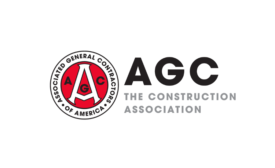Home » Keywords: » construction spending
Items Tagged with 'construction spending'
ARTICLES
Demand appeared strong on balance heading into 2024, but persistent shortage of skilled workers, lagging federal investments in infrastructure and tighter financing conditions may limit growth in outlays
Read More
Construction Spending Rises 0.4 Percent in November Despite Public Project Decline
New spending data comes as construction association gets ready to release industry’s predictions for construction spending trends in 2024, need for new workers and planned investments in AI and other tech
January 3, 2024
Construction Spending Rises 0.4 Percent in September with Record-High Job Openings
Both residential and nonresidential spending post monthly increases, while sharp decline in hiring suggests further growth in spending may be difficult unless industry can attract more workers
November 7, 2023
Construction Spending Grows 0.5 Percent in August to a $1.98 Trillion Annual Rate
All major segments post year-over-year increases, while strength in manufacturing, power, office, and highway and street construction offsets declines in commercial construction between July and August
October 7, 2023
Construction Spending Grows 0.5 Percent in June to $1.94 Trillion Annual Rate as Demand Rises
Solid gains in commercial, manufacturing and office construction offset declines in power, highway and street construction between May and June as association officials call on Feds to clarify project regs
August 3, 2023
Construction Spending Rises in March as Manufacturing Boost Offsets Residential, Nonresidential Drops
Construction officials say permitting delays appear to be holding up public construction activity, warn that firms continue to struggle to find enough workers to hire amid labor shortages
July 20, 2023
Construction Spending Shows Mixed Results in May
Construction association urges federal officials to issue timely, clear and consistent regulations that will facilitate spending to proceed on a wide range of projects already approved by Congress
July 3, 2023
Construction Spending Slips in February Despite Private Nonresidential Increases
Construction officials urge Biden Administration to focus on progress instead when it comes to new federal investments in infrastructure, semiconductor plant and green energy construction projects
June 8, 2023
Connect with the industry’s leading resource for unparalleled insights and education.
Join thousands of industry professionals today. Shouldn’t you know what they know?
JOIN NOWCopyright ©2025. All Rights Reserved BNP Media.
Design, CMS, Hosting & Web Development :: ePublishing

